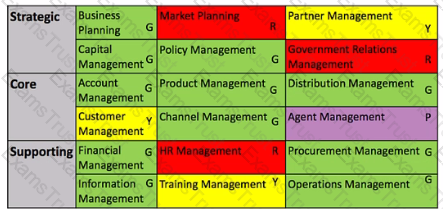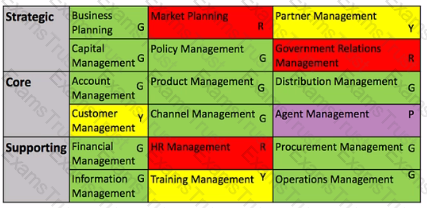Consider the following business capability model. there cells of a model are given different colors to represent desired maturity levels (Green (G)- level achieved, yellow (Y) =one level away, red (R) -two more more levels away, purple (P)=missing capability):

Which of the following best describes what this model shows?
Complete the sentence. An information map is a____________________________________.
Which of the following describes how to define a business capability?
Which of the following are two concepts used for structuring a business capability model?
Consider the following business capability model, where cells of a model are given different colors to represent levels (note the letters G, R, Y, P also denote the colors used = Green, Red, Yellow and Purple):

Which of One following best describes the technique?
Which Mop duringdevelopment of a business scenario ensures that eachiteration is managed as a mini-project?
Whichof the following best describes a TOGAF Business Scenario?
Which of the following is an end product of business capability modeling?
What fundamental business architecture concepts should be considered when creating an Architecture Vision?